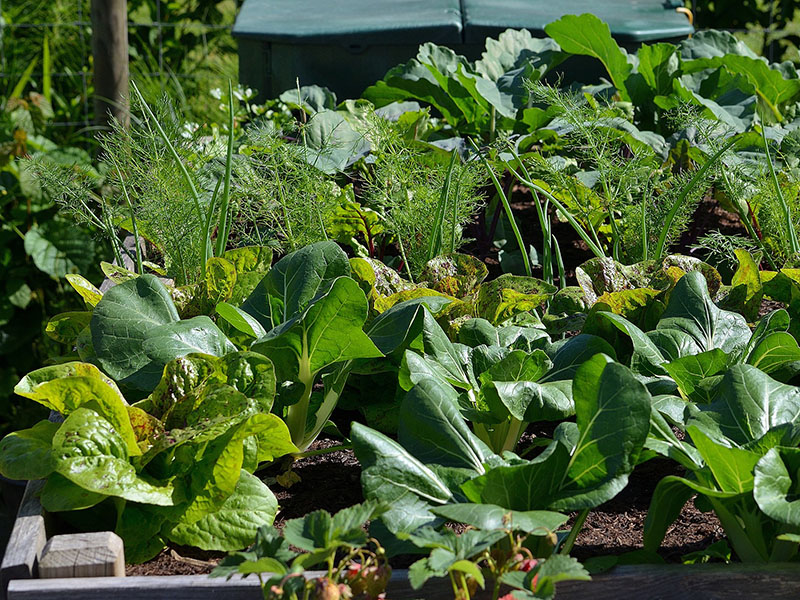Sustainability in property management isn’t just a trend – it’s a necessary evolution in how we maintain and enhance the value of properties, while respecting our planet.
In this guide, we show you 11 tips for property managers looking to improve their energy efficiency, reduce their environmental footprint, and invest towards long term success.
Understanding the Importance of Sustainable Property Management
Why Embrace Green Property Management?
Our environmental responsibilities have never been more pronounced. With growing concerns over climate change, resource depletion, and ecological degradation, property management professionals have a pivotal role in promoting sustainability.
By integrating green property management practices, you can achieve significant energy savings, enhance tenant health and satisfaction, and increase the property’s market value – all while contributing to the global initiative of environmental preservation.
Let’s explore some sustainable property management practices.
Core Principles of Eco-Friendly Property Management
Green property management revolves around several green building principles:
- Energy Efficiency: Reducing energy consumption through various means.
- Water Conservation: Minimizing water use and managing landscaping efficiently.
- Waste Reduction: Implementing recycling programs and reducing waste.
- Indoor Air Quality: Maintaining healthy indoor environments.
- Sustainable Materials: Using eco-friendly building materials.
- Innovative Strategies: Incorporating new technologies and practices.
11 Sustainable Property Management Tips
Energy Efficiency
Installing solar panels isn’t just eco-friendly; it’s economically wise. States and the federal government offer tax incentives that can offset initial costs. Beyond solar, property managers should prioritize LED lighting, high-efficiency HVAC systems, and energy-efficient appliances. Each element plays a crucial role in reducing the property’s carbon footprint and operational costs.
Energy Efficiency Programs and Incentives in BC, Canada
- Canada Greener Homes Program: Up to $5,000 for energy-efficient retrofits, applied through CMHC (Canada Mortgage and Housing Corporation).
- Canada Greener Homes Loan Program: Interest-free loans of up to $40,000 for eligible retrofits.
- BetterHomesBC: Incentives for high-efficiency heating equipment and building-envelope improvements.

Water Conservation
With fresh water scarcity becoming a growing global concern and utility costs rising, property managers can lead the charge in water conservation. Implementing sustainable practices benefits the environment while reducing utility costs and improving property resale value.
Methods for Water Conservation
- Low-Flow Fixtures: Installing low-flow toilets, showerheads, and faucets.
- Efficient Irrigation Systems: Implementing smart controllers, drip irrigation, and choosing native plants to minimize water waste.
- Xeriscaping: Using drought-resistant plants and minimizing turf areas, especially in drought-prone regions like the Okanagan Valley.
Waste Reduction
An effective recycling system is essential in modern property management. Properties should provide clearly labeled bins for different types of waste, including compost bins for organic waste. Encouraging tenants to participate in these programs is crucial and can be facilitated through regular communication and incentives.
Strategies for Waste Reduction
- Bulk Purchasing and Packaging Reduction: Buy supplies in bulk to minimize packaging waste and opt for reusable containers or eco-friendly packaging materials.
- Community Composting: Establish a community composting area for residents and encourage composting of food scraps and yard waste.
- Upcycling and Repurposing: Encourage tenants to upcycle or repurpose items instead of discarding them. Host workshops or events to promote creative reuse.

Indoor Air Quality
Using zero VOC (Volatile Organic Compounds) paints and maintaining good ventilation are essential for improving indoor air quality. These practices reduce the presence of harmful pollutants and enhance the overall health and well-being of tenants.
Key Points for IAQ Management
- Ventilation: Ensures fresh air circulation and reduces indoor pollutants.
- Air Filtration: High-quality air filters remove particles, allergens, and pollutants.
- Humidity Control: Maintaining optimal humidity levels prevents mold growth and improves IAQ.
- Source Control: Address sources of pollution (e.g., smoking, cleaning products) to minimize their impact.
- Regular Maintenance: Inspect HVAC systems, ducts, and filters regularly.
- Natural Materials: Use eco-friendly building materials to reduce off-gassing.
Sustainable Materials
Whether it’s the installation of bamboo flooring or the use of recycled materials in construction and renovations, choosing sustainable materials like recycled steel, reclaimed wood, or bamboo helps reduce the environmental impact of building processes and operations, while increasing energy efficiency and indoor air quality.

Smart Technology Integration
Smart thermostats and IoT-enabled lighting systems can significantly enhance energy efficiency. These technologies allow for automated adjustments based on real-time usage and environmental conditions, leading to more precise control and reduced energy waste.
- Smart Thermostats: These devices learn occupants’ preferences and adjust heating or cooling accordingly. They optimize energy use by adjusting temperatures based on occupancy patterns and external weather conditions.
- IoT-Enabled Lighting Systems: Smart lighting systems use motion sensors and daylight harvesting to reduce energy consumption. Lights automatically turn off when rooms are unoccupied or when natural light is sufficient.
Green Certifications & Badges
Earning certifications such as the LEED (Leadership in Energy and Environmental Design) or ENERGY STAR can help properties stand out in a competitive market and meet the high standards of sustainable building practices and environmental responsibility. Prominently displaying green certifications and initiatives can attract eco-conscious tenants and investors.
- LEED: LEED-certified buildings meet strict sustainability criteria. Certifications are available for various building types (residential, commercial, etc.).
- ENERGY STAR: Buildings with ENERGY STAR certification demonstrate superior energy efficiency. Displaying the ENERGY STAR label signals environmental responsibility to potential tenants and investors.
Partner with Green Businesses
Property owners can amplify their sustainability initiatives by partnering with businesses that offer eco-friendly services, such as green cleaning companies or sustainable landscaping firms. Fostering green partnerships enhances the property’s environmental credentials while supporting your local green economy.
- Green Cleaning Companies: Collaborate with cleaning services that use eco-friendly products and practices. This reduces chemical exposure for occupants and minimizes environmental impact.
- Sustainable Landscaping Firms: Opt for landscaping companies that prioritize native plants, water-efficient irrigation, and organic practices.
Tenant Engagement in Sustainability Tips
Educational Initiatives
Regular workshops and newsletters can help educate tenants about the importance of sustainability and how they can contribute. Topics might include energy-saving tips, proper recycling practices, and the benefits of using green transportation options.
Incentives for Green Living
Offering incentives for tenants who adopt green practices can be highly effective. For example, discounts on rent for tenants who consistently reduce their utility usage or participate in recycling programs can motivate others to follow suit.

Community Gardens and Green Spaces
Developing community gardens or other green spaces not only improves property aesthetics and tenant satisfaction but also encourages a community-focused approach to sustainability. These spaces provide a tangible benefit to tenants and promote biodiversity.
Market Your Green Property
Highlight Eco-Friendly Features
In all marketing materials, highlight the property’s sustainable features. Use high-quality images and descriptions to showcase eco-friendly appliances, solar panels, green roofs, and efficient water systems.
Display Eco Badges and Ratings
In online listings, make sure to mention any eco-certifications or ratings the property has received. This can be a deciding factor for environmentally conscious tenants and can significantly boost the property’s visibility and attractiveness.
Tell Your Story
Share success stories of your property’s sustainable initiatives, such as a significant reduction in energy consumption or waste, through newsletters, social media, and community events. Reporting on your successes helps to reinforce the property’s commitment to sustainability while building a community ethos of environmental responsibility.
Operations & Maintenance Phase
The operations and maintenance phase of the building life cycle is critical in sustainable property management, requiring continuous implementation of eco-friendly practices, regular maintenance checks, system updates to more energy-efficient models, and ongoing tenant education to ensure long-term sustainability.
Key Actions During the Operations and Maintenance Phase
- Regular Inspections: Conduct routine inspections of HVAC systems, water fixtures, and lighting to ensure they operate efficiently.
- Preventive Maintenance: Implement preventive maintenance schedules to avoid major repairs and ensure systems run smoothly.
- Upgrading Systems: Replace outdated systems with energy-efficient models as part of regular upgrades.
- Tenant Engagement: Continuously educate tenants on sustainable initiatives and involve them in maintaining eco-friendly living environments.
- Monitoring and Reporting: Keep track of energy and water usage and report on sustainability efforts to demonstrate progress made by your property management company and identify areas for improvement.
The Path Forward in Green Building Management
Sustainability should be part of any real estate management strategy in 2024. By adopting and continually evolving green practices, property managers can create thriving, desirable living spaces that stand out in the market while balancing and contribute positively to the planet.
The journey towards sustainability is ongoing and requires commitment, innovation, and community involvement, but the rewards – both environmental and financial – are immense.
